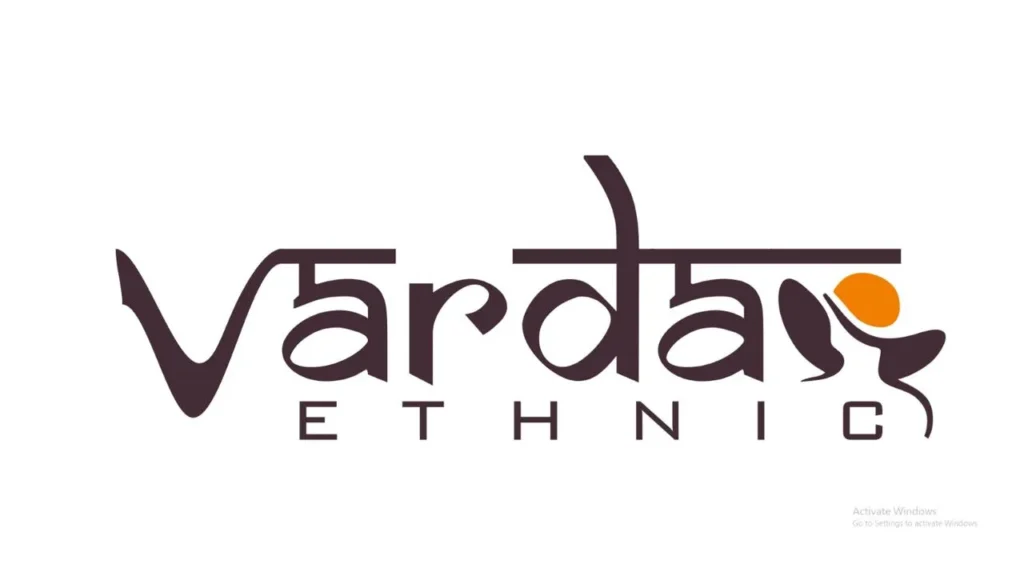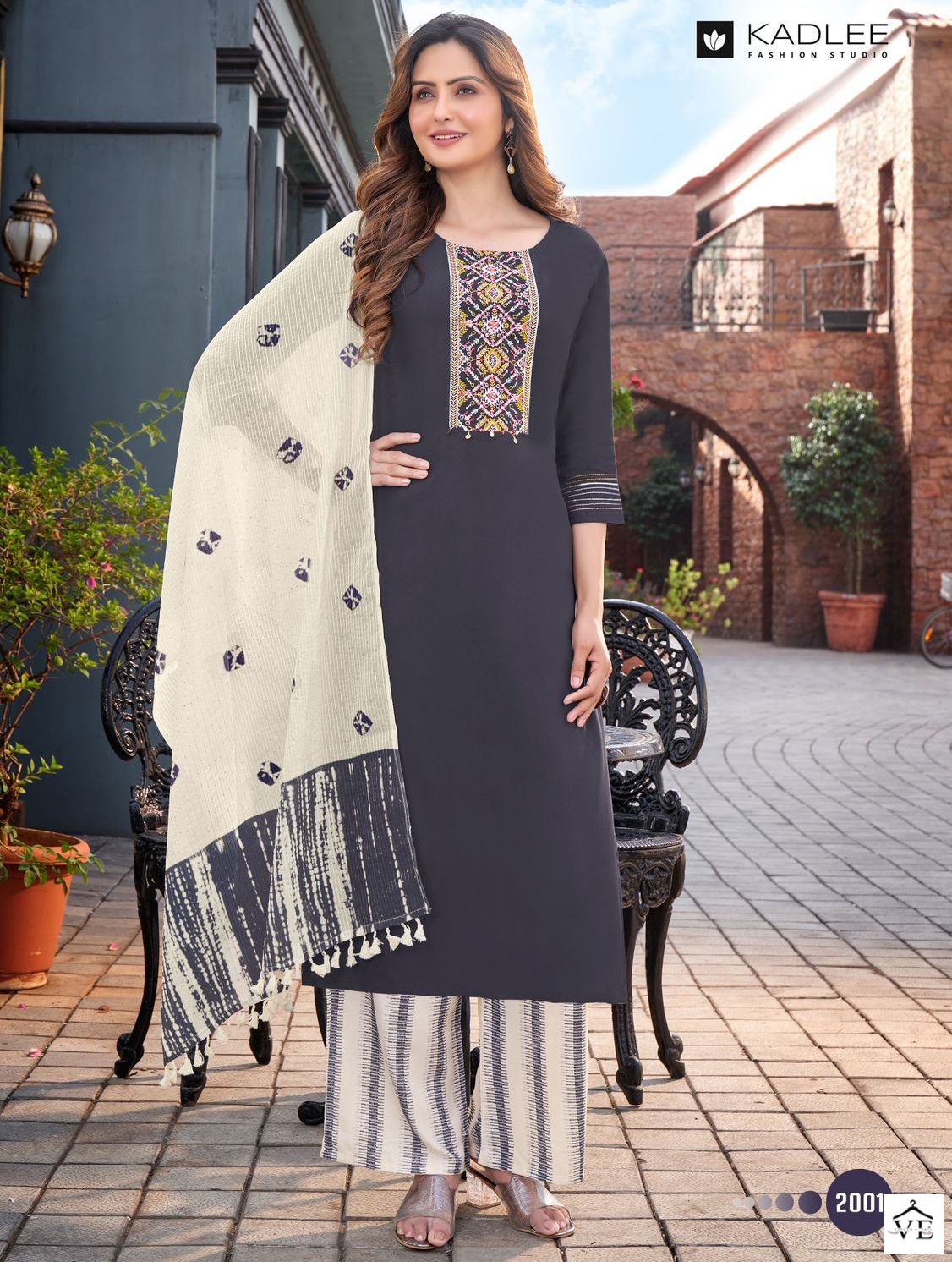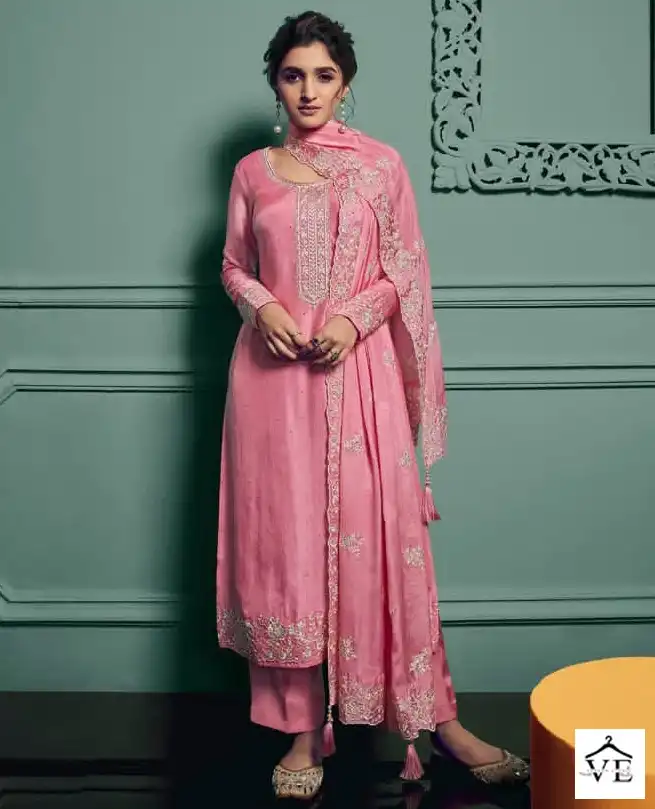Aanaya 9200 Series Vol 192 Faux Georgette Wholesale Designer Salwar Suit Catalog
₹11,580 – ₹13,180Price range: ₹11,580 through ₹13,180
No Of Pcs |
4 |
Per Pc Price |
Unstitch : 2895 | Full Stitch : 3295 |
Top |
Faux Georgette |
Bottom |
Santoon With Santoon Inner |
Dupatta |
Faux Georgette |
Work |
Lakhnavi Work Front & Back Both Side Work With Best Quality |
Size |
S to XXL |
Availability |
Set to Set |
SKU: 9200 Series Vol 192 , Aanaya
Categories: Wholesale, Wholesale Designer Salwar Suits, Wholesale Dress Material, Wholesale Readymade Suit, Wholesale Salwar Suits
Tags: Readymade Suits Under 2000, Suits Above 1500
Product
The first “P” focuses on the specifics of what you are selling and how it meets customer needs.
- Description: The product is a set of clothing that includes a top, sharara (wide-legged pants), and a dupatta (scarf). The materials used are Faux Georgette for the top and dupatta, and Santoon for the sharara with an inner lining, offering comfort and style.
- Workmanship: It features intricate Lakhnavi work on both the front and back, indicating a high level of craftsmanship and aesthetic appeal. This type of detailed embroidery can attract customers looking for traditional yet elegant attire.
- Versatility: Available in sizes ranging from S to XXL, it caters to a broad range of body types, enhancing its marketability.
- Options: Offered in both unstitch (unstitched) and full stitch (ready-to-wear) variants, providing flexibility for customers who want custom tailoring or a ready-made solution.
Competitor Considerations:
- Product Differentiation: Examine how competitors’ materials, craftsmanship, and size range compare. Highlight the uniqueness and quality of your Lakhnavi work and material choice.
- Customization Options: Evaluate if competitors offer both unstitch and full stitch options. This flexibility can be a strong selling point for your product.
- Customer Needs: Ensure that your product meets or exceeds the typical expectations for similar attire in terms of style, comfort, and cultural relevance.
Price
The second “P” deals with the pricing strategy and how it aligns with market expectations and competitive positioning.
- Per Pc Price: The unstitch option is priced at ₹2895, while the full stitch version is priced at ₹3295.
- Value Perception: Pricing reflects the premium nature of the materials and the intricate Lakhnavi work, positioning the product as a high-quality, yet reasonably priced offering within its category.
Competitor Considerations:
- Competitive Pricing: Compare your pricing against similar products from competitors. If your product is priced higher, ensure that the value—through quality, materials, or craftsmanship—is clearly communicated.
- Promotional Offers: Check if competitors frequently offer discounts or bundle deals. Decide if such strategies could be beneficial for your pricing strategy without devaluing the product.
- Market Positioning: Determine whether your pricing aligns with the luxury, mid-range, or budget segments. Position your product accordingly to attract the right customer base.
Place
The third “P” involves how and where your product is sold, focusing on distribution channels and market reach.
- Availability: The product is available as a set-to-set purchase, suggesting it is sold in complete sets rather than individual pieces.
- Distribution Channels: Consider where your product will be sold. This could include online platforms, boutique stores, or larger retail chains.
Related products
MOQ: 6 Pieces
Price Per Pc: 890 Rs
MOQ: 8 Pieces
Price Per Pc: 1880 Rs
Price Per Pc: 2689 Rs

%202.webp)
%208.webp)
%207.webp)
%206.webp)
%205.webp)
%204.webp)
%203.webp)
%201.webp)
 2-100x100.webp)
 8-100x100.webp)
 7-100x100.webp)
 6-100x100.webp)
 5-100x100.webp)
 4-100x100.webp)
 3-100x100.webp)
 1-100x100.webp)


